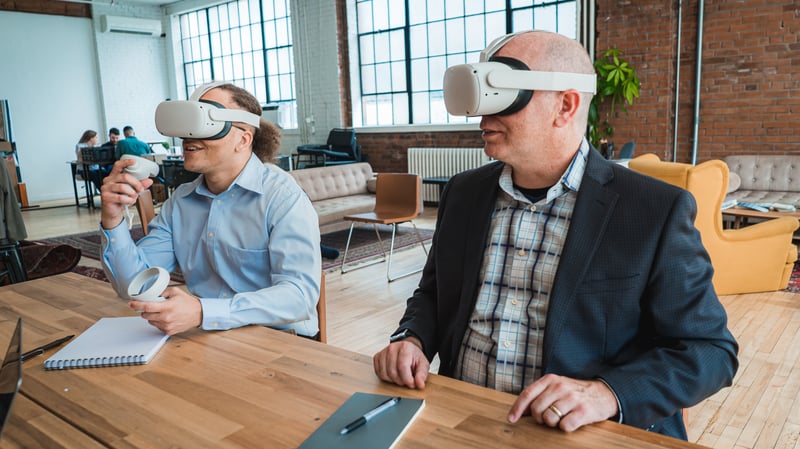Virtual reality (VR) has revolutionized countless industries across the business landscape, and the architecture industry is no exception. Once a tool confined to the likes of gaming and novelty, VR is now a business tool transforming the way architects design, present, and engage with clients. The power of VR cannot be understated.
Are you an architect curious about VR and looking to understand just why it is becoming popular in your industry, don’t worry. In this blog post, we'll explore the top five benefits of using VR in architectural presentations, demonstrating how this immersive technology is reshaping the future of the built environment.
Enhancing Client Engagement and Understanding
Virtual Reality (VR) presentations have significantly improved client engagement by offering immersive and interactive experiences. Unlike traditional blueprints and 2D renderings, VR allows clients to walk through a project before it's built, providing a more tangible sense of space and scale.
This immersive experience can help clients better understand design concepts, reducing misunderstandings and ensuring that their vision aligns with the final product. The ability to interact with the design in real-time also allows for immediate feedback, further enhancing client satisfaction. As we like to say, an engaged client is an informed client.
Streamlining Design Revisions and Approvals
One of the key benefits of VR presentations is the ability to streamline design revisions and approvals. By visualizing the project in a virtual environment, stakeholders can quickly identify and address design issues that may not be apparent in 2D drawings.
This efficiency in communication and decision-making can significantly shorten the revision cycle, enabling faster approvals and reducing project delays. The interactive nature of VR also allows for on-the-spot modifications, making the design process more dynamic and efficient.

Reducing Costs and Time in Project Planning
Incorporating VR into architectural presentations can lead to substantial savings in both time and costs. By identifying potential design flaws early in the process, VR helps avoid costly changes and rework during construction.
Additionally, the ability to conduct virtual walkthroughs reduces the need for physical models and mock-ups, which are often expensive and time-consuming to produce. The streamlined decision-making process facilitated by VR also contributes to more efficient project timelines.
Improving Team Collaboration and Communication
VR presentations foster better collaboration and communication among project teams. Architects, engineers, contractors, and other stakeholders can all experience the same virtual environment, ensuring that everyone is on the same page.
This shared understanding enhances coordination and reduces the likelihood of miscommunications that can lead to errors and delays. The collaborative nature of VR also encourages more creative problem-solving, as team members can explore different design options together in real-time.

Showcasing Innovation and Cutting-Edge Technology
Using VR in architectural presentations positions firms as leaders in innovation and technology. This not only attracts clients who are looking for modern and forward-thinking solutions but also sets the firm apart in a competitive market.
Showcasing projects through VR highlights a commitment to leveraging the latest technology to deliver the best results, enhancing the firm’s reputation and appeal. It also demonstrates a proactive approach to embracing new tools and methodologies that can drive the industry forward.
Conclusion
The integration of VR into architectural presentations has marked a significant leap forward in the industry. By providing immersive experiences, fostering collaboration, and enhancing client engagement, VR is redefining how architects communicate their visions. As technology continues to evolve, we can expect even more innovative applications of VR in the architectural realm, further blurring the lines between the digital and physical worlds. The future of architecture is undeniably immersive, and VR is at the forefront of this exciting new era.







